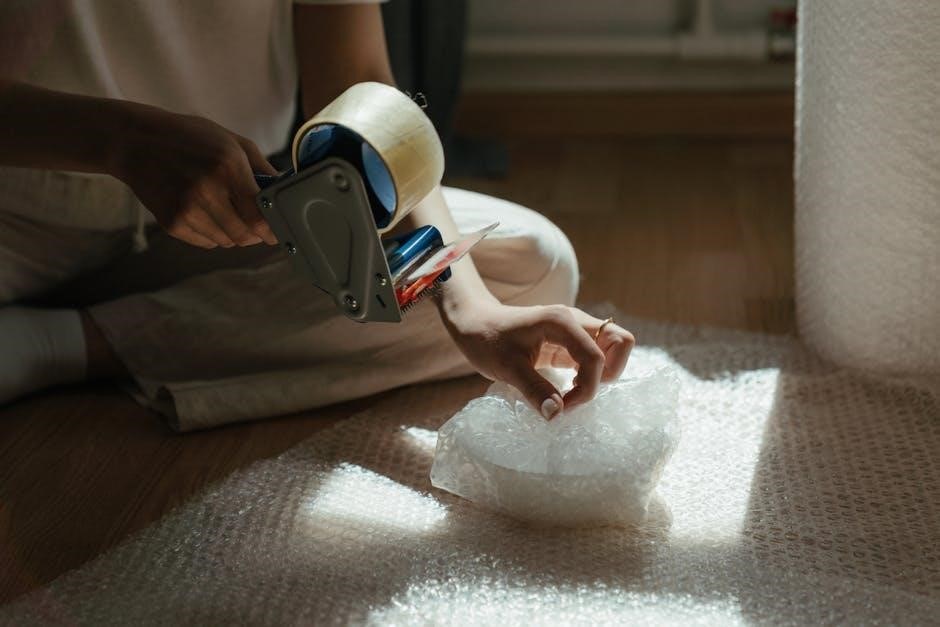
crazy forts instructions
Crazy Forts are an award-winning, imaginative building toy featuring colorful balls and sticks that connect to create endless play structures. Perfect for fostering creativity and spatial reasoning, they empower children to design unique forts, castles, and more, encouraging imaginative play and collaboration. With easy-to-follow instructions, kids can transform any space into a magical world, limited only by their creativity.
What Are Crazy Forts?
Crazy Forts are an innovative building toy that allows users to create unique and imaginative structures using a combination of balls and sticks. The system consists of reusable, durable components that can be easily assembled to form the framework of various forts, houses, or other creative designs. The balls serve as connectors, while the sticks act as the framework, providing flexibility and stability. Crazy Forts are perfect for indoor or outdoor play, encouraging creativity, problem-solving skills, and teamwork. They are suitable for all ages, making them a great activity for families, schools, or individual play. With Crazy Forts, the possibilities are endless, as users can design anything from simple shelters to elaborate architectural masterpieces. This versatile toy fosters imagination and physical activity while providing hours of entertainment.
Benefits of Building with Crazy Forts
Building with Crazy Forts offers a wide range of benefits, particularly for children. It encourages creativity and imagination, allowing users to bring their ideas to life through unique structures. The process enhances problem-solving skills as individuals learn to balance and stabilize their creations. Crazy Forts also promotes physical activity, as assembling and rearranging the components requires movement and coordination. Teamwork is fostered when building with others, making it a great collaborative activity. Additionally, it helps develop fine motor skills and hand-eye coordination in younger users. The repetitive process of connecting balls and sticks can be calming and meditative, providing a sense of accomplishment as the structure takes shape. Overall, Crazy Forts is an engaging and educational toy that combines fun with learning, making it an excellent tool for cognitive and physical development.

Components of Crazy Forts
Crazy Forts consist of durable, lightweight balls and sticks, designed for easy assembly. The balls serve as connectors, while the sticks act as framing elements, allowing versatile structures to be built.
The Balls: Foundation of Every Structure
The balls are the core components of Crazy Forts, serving as the primary connectors for the sticks. Made from durable, lightweight material, they are designed to withstand repeated use and provide stability to any structure. Each ball features multiple holes of varying sizes, allowing sticks to be inserted at different angles, which enhances flexibility and creativity in building. The rounded shape ensures smooth connections, making it easy to adjust or reposition the framework as needed. These balls are essential for creating a solid base and supporting the weight of the fort, whether it’s a simple house or a complex castle. Their versatility and durability make them the foundation of every Crazy Forts creation.
The Sticks: Connecting the Pieces
The sticks are the essential connectors in Crazy Forts, bridging the balls to form the framework of any structure. Typically made of durable, lightweight materials like plastic or wood, these sticks are designed to fit securely into the holes of the balls. Their straight shape allows for precise alignment, while their smooth edges ensure safe handling. Available in various lengths, the sticks offer flexibility in designing forts of different sizes and shapes. They are easy to insert and remove, making adjustments simple. The sticks provide the structural integrity needed for stability, enabling users to experiment with creative designs. Their reliability and adaptability make them indispensable for building anything from simple shelters to elaborate castles. Properly aligning the sticks ensures a sturdy and balanced fort.

Basic Construction Steps
Start by creating a solid foundation, then connect the balls and sticks to form the structure. Ensure stability at each step to allow for creativity and durability.
Starting with a Solid Base

To build a sturdy Crazy Fort, begin by creating a solid base. Arrange the balls in a square or circular pattern, ensuring they are evenly spaced and form a balanced foundation. This step is crucial as it determines the overall stability of the structure. For added strength, connect the balls using sticks, forming a rigid frame. A wider base provides better support and prevents the fort from tipping over. Experiment with different configurations to find the most stable setup. Once the base is secure, you can proceed to add layers and expand the structure vertically. A strong foundation ensures your Crazy Fort will withstand play and creativity, making it both durable and fun.
Connecting Balls and Sticks
Once the base is set, the next step is to connect the balls and sticks to form the structure’s framework. Begin by inserting a stick into one of the ball’s connectors, ensuring it clicks securely into place. Repeat this process with adjacent balls to create a interconnected framework. For horizontal connections, align the sticks evenly to maintain balance. Vertical sticks can be added to create height, while diagonal sticks add extra support. Always ensure each connection is snug to prevent instability. Start with a simple frame and gradually build upwards, checking the structure’s balance as you go. This step is where creativity shines, as you shape the fort’s design and functionality. Secure connections are key to a durable and fun Crazy Fort.
Ensuring Stability and Structure
To ensure your Crazy Fort remains stable, start by checking the balance of your structure. Make sure the base is even and the weight is evenly distributed. Use diagonal sticks to reinforce corners and connections, adding extra support to weak points. This helps prevent the fort from leaning or collapsing. As you build upwards, periodically test the stability by gently shaking the structure. If it wobbles, identify loose connections and tighten them by adjusting the sticks or adding more balls for reinforcement. For larger forts, consider creating a frame within the structure to distribute weight more evenly. Regularly inspecting and reinforcing your fort will help it withstand play and last longer. Stability is key to enjoying your Crazy Fort creation.

Popular Crazy Fort Designs
Crazy Forts inspire creativity with various designs, from cozy houses to grand castles and even igloos. These structures spark imagination and teamwork while providing endless fun.
Building an Igloo
Constructing an igloo with Crazy Forts is a fun and creative project. Start by forming a circular base using the balls and sticks. Connect the pieces to create a dome shape, ensuring each layer slightly smaller than the last. Use diagonal sticks for added stability and a snug fit. As you build upward, angle the sticks inward to form the iconic igloo curve. Reinforce the structure with extra sticks for durability. Once complete, cover it with blankets or fabric for a cozy finish. Add a small entrance tunnel for authenticity. This design teaches geometric concepts while encouraging imaginative play. Customize with flags or lights for a personalized touch. Always ensure the structure is stable and safe for children to enjoy.
Constructing a House
Building a house with Crazy Forts is a classic and engaging activity. Start by creating a rectangular base using the balls and sticks. Connect the balls to form the corners and sides, ensuring the structure is sturdy. Add roof support by placing sticks diagonally across the top. Use additional sticks to create walls and define rooms. For a pitched roof, layer sticks at angles, securing them firmly. Cover the frame with blankets or sheets to complete the house. Customize by adding windows, a door, or even a chimney. This design promotes problem-solving skills and creativity. Always ensure the fort is stable and safe for play. Encourage imaginative play by adding furniture or lights inside.
Creating a Castle
Constructing a castle with Crazy Forts is a fun and imaginative project. Begin by creating a large, sturdy base using multiple balls and sticks to form a square or circular foundation. Add towers at each corner by stacking balls vertically and connecting them with sticks. Use additional sticks to create walls and battlements around the perimeter. Reinforce the structure by connecting the towers to the main walls. For added detail, build a gate and a drawbridge using sticks and balls. Decorate the castle with flags or fabric for a royal touch. To make it more elaborate, add a moat or a surrounding fence. This design encourages creativity and teamwork while providing hours of imaginative play.

Advanced Crazy Fort Designs
Take your fort-building skills to the next level with intricate designs like rockets, safari huts, and pyramids. These complex structures challenge creativity and precision.
Building a Rocket
Constructing a rocket with Crazy Forts is an exciting advanced project that challenges creativity and engineering skills. Begin by creating a tall, narrow structure using vertical sticks connected to balls, forming the rocket’s body. Use diagonal sticks to reinforce the sides and ensure stability. Add a smaller structure on top for the cockpit and fins at the base for a realistic look. For extra detail, attach sticks to form a launch pad or control panel. This design encourages precision and imagination, making it a fun and educational activity for both kids and adults. Don’t forget to cover your rocket with fabric or paper for a final touch!
- Use vertical sticks to create height.
- Add diagonal sticks for reinforcement.
- Incorporate details like fins and a cockpit.
- Finish with a themed covering for authenticity.
Designing a Safari Hut
Creating a Safari Hut with Crazy Forts is a fun and creative project that brings a touch of African-inspired design to your fort building. Start by forming a circular base using balls and sticks, ensuring it is sturdy and even. Next, construct the walls by leaning sticks against each other, angling them inward slightly to mimic the traditional Safari Hut shape. For the roof, create a conical structure by connecting sticks to a central peak, ensuring it is secure and balanced. Add details like a thatched roof using fabric or paper, and incorporate an entrance or windows for authenticity. Use diagonal sticks to reinforce the structure for added stability. This design encourages imaginative play and cultural exploration while honing engineering skills.
- Form a circular base for stability.
- Build sloping walls for the hut shape.
- Create a conical roof with support sticks.
- Add a thatched roof covering for detail.
- Incorporate an entrance or windows.

Constructing a Pyramid
Building a pyramid with Crazy Forts is an excellent way to explore geometric shapes and structural stability. Begin by creating a square base using four balls and connecting sticks to form a solid foundation. Next, build upward by connecting additional balls and sticks to create layered triangles, ensuring each layer is smaller than the one below it. Angle the sticks inward to form the pyramid’s sides, meeting at a central peak. Reinforce the structure with diagonal sticks for added stability. Cover the pyramid with fabric or paper for a smooth, authentic appearance. This design teaches symmetry and balance while encouraging patience and precision in construction.
- Start with a square base for stability.
- Build upward with layered triangles.
- Angle sticks inward to meet at a peak.
- Reinforce with diagonal sticks.
- Add a covering for a finished look.


Tips for Building Stronger Forts
Ensure stability by using diagonal sticks for reinforcement and securing all connections tightly. Choose durable coverings like thick blankets or tarps for better structural integrity and longevity.
Using Diagonal Sticks for Reinforcement
Reinforce your Crazy Forts structures by strategically placing diagonal sticks between the balls. This technique enhances stability and prevents the fort from swaying or collapsing under weight. By creating triangular support systems, diagonal sticks distribute pressure evenly across the framework, making the structure more durable. Start by adding diagonals to the base layer to establish a solid foundation, then incorporate them between upper layers for added strength. This method is particularly effective for taller forts, as it helps maintain balance and prevents toppling. Regularly check and tighten diagonal connections to ensure long-lasting stability. With careful placement, diagonal sticks can transform a simple fort into a robust and enduring creation.
Choosing the Right Coverings
Selecting the appropriate coverings for your Crazy Forts is crucial for both functionality and aesthetics. Lightweight materials like sheets, blankets, or fabric scraps are ideal for draping over the structure. Thicker fabrics or tarps can provide durability and weather resistance for outdoor use. Ensure the coverings are large enough to drape smoothly without sagging. Secure them tightly using clips, elastic bands, or by tucking edges into the ball connectors to maintain a snug fit. Clear or sheer materials allow natural light inside, while colorful fabrics can add a creative touch. Experiment with different patterns and textures to match your fort’s theme. Properly chosen coverings enhance the fort’s stability and transform it into a cozy, inviting space.

Safety Tips
Ensure the play area is clear of hazards and supervise children during construction. Use sturdy materials to prevent collapse and avoid sharp objects. Ensure proper ventilation inside the fort.
Ensuring a Safe Play Area
Before building, clear the space of any breakable or fragile items. Ensure the floor is soft, like carpet or mats, to cushion falls. Keep the area well-lit to prevent tripping. Avoid placing forts near hot appliances, sharp objects, or windows. Supervise young children to ensure they use the materials safely. Teach kids to enter and exit carefully to avoid collisions. Make sure the fort’s entrance and exit are clear and accessible. Encourage gentle play to prevent accidental damage or injuries. Always follow the manufacturer’s guidelines for materials and construction. By creating a safe environment, you help ensure a fun and enjoyable experience for everyone involved.